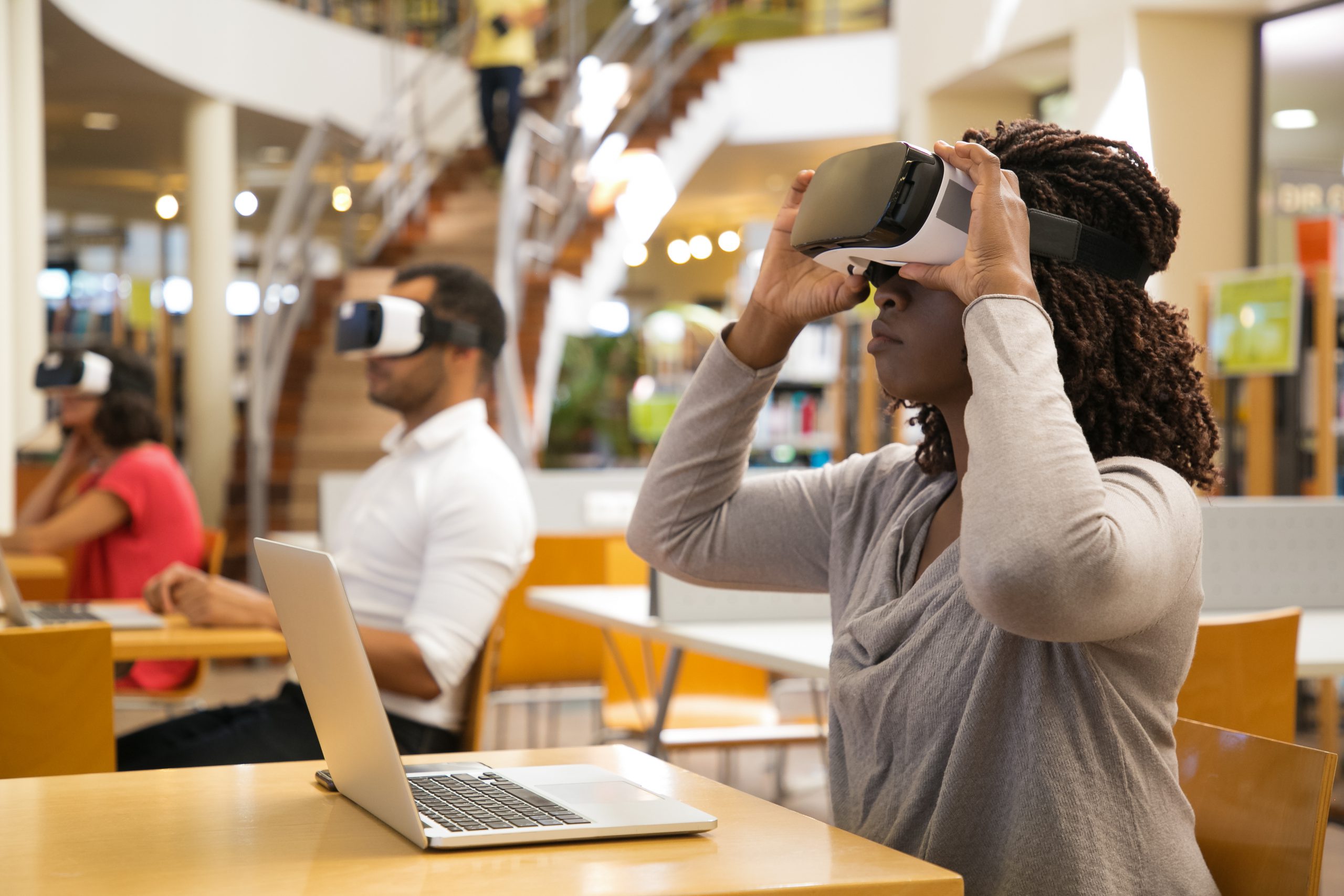Exploring Potential of Learning Assessments in Metaverse

Assessments have long been a critical component of the learning process, providing students and educators with valuable insights into what has been learned and where there is room for improvement. However, as technology continues to evolve, so do the methods for conducting assessments. In particular, the rise of the metaverse has opened up exciting new possibilities for assessing learning.
Metaverse – The Next Generation of the Internet
The metaverse is a virtual space where people can interact with each other and digital objects in a fully immersive and interactive way. A device-agnostic Metaverse accessible via PCs, game consoles, and smartphones could result in a huge learning ecosystem.
The Metaverse Infrastructure Building
The Metaverse proponents envisage a fully-immersive content streaming environment where users are able to go from one experience to another seamlessly. This would involve a continuous stream of interconnected data — a computational efficiency improvement of over 1,000x versus today.
To make the vision of the Metaverse a reality would need a significant investment in a confluence of technologies, such as
- Compute (Central Processing Unit (CPU), Graphics Processing Unit (GPU))
- Storage (Data Centers, Cloud), Edge Computing
- Network Infrastructure (Low Latency, High Bandwidth)
- Consumer Hardware (Headsets, Real World Modelling)
- Game Development Platforms
This investment would need to be orders of magnitude higher than today’s levels to facilitate the enabling infrastructure for virtual worlds to be enhanced by VR and AR.

The Metaverse Ecosystem
Image Source: https://www.researchgate.net/figure/The-technology-ecosystem-enabling-the-metaverse_fig1_367053269
The Metaverse Connectivity Challenge
Meta Platforms highlighted the connectivity challenges and significant advancements needed in network latency, symmetrical bandwidth, and overall speed of networks for an open and interoperable Metaverse.
Network Latency Constraint
Today’s latency-sensitive apps, like video calling/cloud gaming, have a round-trip latency of 75 ms to 150 ms, and multiplayer, complex games can go sub-30 ms. However, for the Metaverse to be truly immersive, graphics must update much faster, i.e., single to low double-digit milliseconds. Local real-time rendering could enable this but necessitate large downloads for complex scenes, which may be unfeasible. Instead, the development of remote rendering over edge cloud or a hybrid between local and remote rendering will likely play a greater role in the future.
Immersive Video-Streaming Gaps
The Metaverse will likely be accessed via a head-mounted display, centimeters away from the eye, requiring large-resolution videos, potentially well beyond 4K. This would require substantial improvements in network throughput and innovations across the hardware and software stack.
Ways in which assessments can be conducted in the metaverse
Assessments in the metaverse can potentially transform how we evaluate learning. They can be more engaging and interactive than traditional assessments and can provide educators with detailed information about a student’s understanding of a subject.

Interactive Simulations
One of the most promising applications of the metaverse for learning is in the area of simulation-based assessments. Simulations are powerful tools for assessing learners’ knowledge and skills, as they provide a safe and controlled environment where learners can practice and receive feedback on their performance.
For example, in a science class, students could be asked to conduct experiments in a virtual lab, which could then be used to evaluate their understanding of the scientific concepts being studied. In the metaverse, simulations can be even more realistic and engaging, as learners can interact with virtual objects and environments in a way that feels real.
Game-based Assessments
Games have long been used as a way to engage students and assess their learning. The metaverse allows for the creation of game-based assessments that can be used to evaluate a student’s understanding of a particular subject.
For instance, a teacher could design a challenge that requires students to apply their arithmetic skills to solve puzzles and unlock new game levels.
Collaborative Assessments
The metaverse allows for real-time collaboration between students, which can be used to assess teamwork and collaboration skills. The students could be asked to work together to solve a problem in a virtual environment, with their performance evaluated based on how well they work together.
For example, in business education, learners could collaborate in the metaverse to develop and pitch a business idea to a panel of virtual investors. The learners would be assessed not only on the quality of their idea but also on their ability to work effectively as a team and communicate their ideas effectively.
Similarly, in language education, learners could collaborate in the metaverse to practice their language skills with native speakers from around the world.

Performance-based Assessments
Students can demonstrate their skills and knowledge through performance-based assessments in the metaverse.
For instance, in an art class, students could be asked to create a digital artwork, which could then be evaluated based on the quality of the work and the creative thinking involved.
Personalized Assessments
The metaverse allows for the creation of personalized assessments that can be tailored to a student’s individual needs and abilities.
For example, a student who struggles with reading could be given a virtual environment that is designed to help improve his/her reading skills.
Formative Assessments
The metaverse also provides new opportunities for formative assessment, where learners receive ongoing feedback on their progress and performance. In the metaverse, this feedback can be provided in real-time through the use of virtual mentors and personalized learning paths.
For example, in K-12 education, learners could work through a series of virtual activities and assessments that are tailored to their individual learning needs. As they progress through these activities, they receive feedback and guidance from virtual mentors, who help them identify areas where they need to improve and provide suggestions for how to do so.

Conclusion
To summarize, constructing the Metaverse infrastructure is a major challenge that necessitates significant investment in compute, storage, network infrastructure, consumer hardware, and game development platforms. The connectivity challenge is a significant obstacle that requires improved network latency, symmetrical bandwidth, and overall network speed for an open and interoperable Metaverse.
However, the Metaverse has potential beyond gaming and entertainment. Assessments in the Metaverse can revolutionize how we evaluate learning through interactive simulations, game-based assessments, collaborative assessments, performance-based assessments, personalized assessments, and formative assessments. The Metaverse offers new opportunities for engaging and interactive assessments that can provide educators with comprehensive insights into a student’s understanding of a subject.

